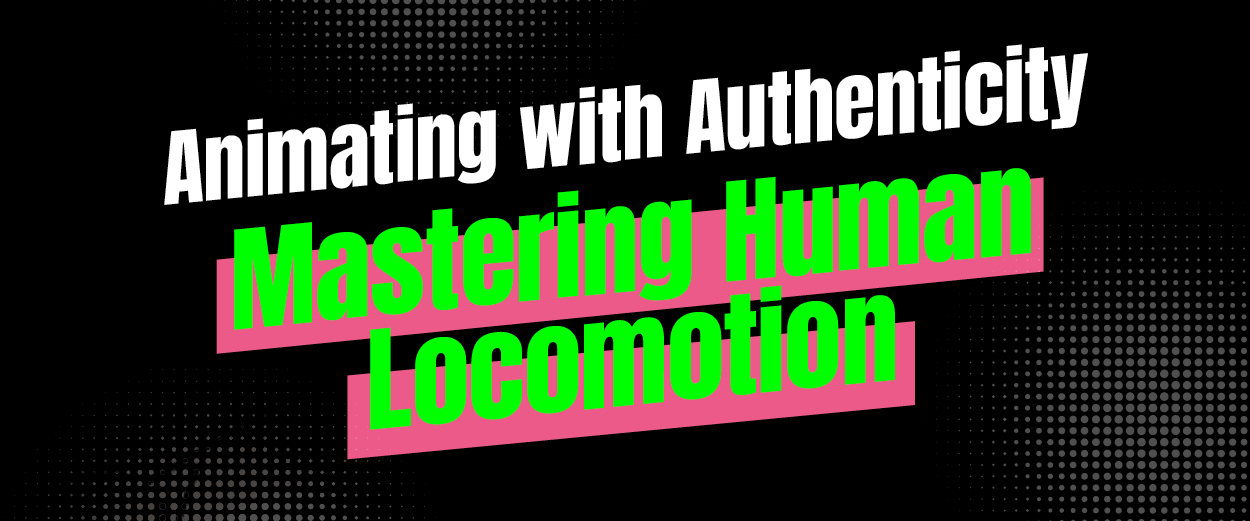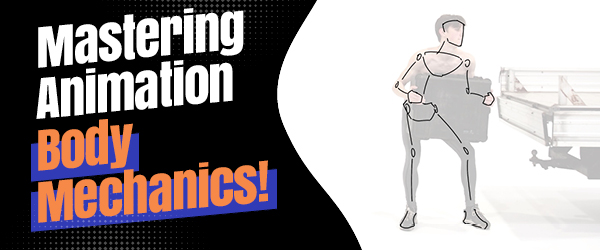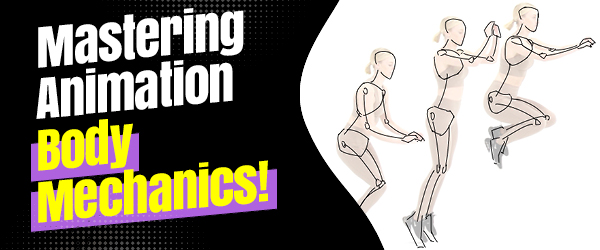Guest post
Author: Jibril Sy.
Jibril Sy is an illustrator and concept artist with a background in storyboarding
and a deep passion for all forms of visual storytelling.
Contact Jibril
Artstation: artstation.com/djbrl
Linkedin: Jibril-Sy
The breakdown of a Jump, from an Artist Perspective
Introduction
A jump is a remarkable feat of human movement that involves a forceful push off the ground using the legs to propel the body upwards into the air. It's a fundamental motion in various sports, dance, and everyday life. The mechanics of a jump are a fascinating interplay of muscle groups, joints, and physical principles. In this article, we'll delve into the intricate details of what goes on within the body when executing a jump, and how animators use timing, exaggeration and other techniques to bring dynamic and believable movement on screen.
Exaggerate for Emphasis
In the GIF above, we see a frame-by-frame breakdown of a stick figure doing a series of jumps, based on the movement of an actor. The resulting animation shows by-definition a realistic jumping sequence, but what is realism for an animator and how would they make this sequence more appealing ?
“When I was directing I used to say to the animators,
‘will you do something for me?’ Will you make
it so extreme that you make me mad?'”
-Dave Hand, Disney Animator and Director
An animator's job is to create the illusion of life by putting next to each other a series of still images, and oftentimes imitation is not enough to do the trick, which is where exaggeration comes in.
To apply exaggeration, we need to break down the movement into a set of key moments and add more intensity to the motion. We're going to put that in practice with this jumping sequence by turning this series of short jumps into a super-jump, by exaggerating the height of the jump, the arc of the movement, and the hang time at the apex.
It should look something like this :
Line of Action & Keyframes
Alright that looks a little bit more exciting ! How does one go about "exaggerating" a movement though ? It's easy to understand on paper, just go extra, but what tools can you use to put that in practice ?
Although the human brain is a highly sophisticated thinking machine, it can easily get overwhelmed when splitting a bill or attempting to visualize and draw a human figure performing a series of movements ! This is where the line of action comes into play.
The line of action, in the context of animation and drawing, is an imaginary line that represents the path and direction of movement or motion in a character or object within a scene. It serves as a visual guide to help maintain the flow, coherence, and dynamic of a movement. It is particularly crucial in character animation as it helps convey the character's balance and intent, ensuring that the animation feels fluid and visually appealing.
When exaggerating a movement, drawing a powerful line of action is essential. The more stress is put onto the line, the more intensity the resulting pose will have. Here we want our stick-figure to stay on planet Earth so we're not squatting as deep as we could, but the resulting movement is still significantly more dynamic than the squat of the original jump sequence. The legs serve as the primary force generators in a jump, providing the necessary energy to lift the body off the ground. This action stores potential energy in the muscles, akin to compressing a spring, and when it's time to jump, the legs extend forcefully, releasing the stored energy, which propels the body upwards. By varying the intensity of the line of action, we can mimic and exaggerate the mechanics of a jump in our animation.
The arc of the jump should be considered as well. The character's body should follow a curved path, matching the trajectory and intensity of their jump.
Another essential tool in exaggerating a movement is to use keyframes, here represented in red at takeoff, apex and landing. Keyframes are specific frames within an animation sequence that mark critical points in the motion. By strategically placing them, we can select ahead of time the poses that will best sell the movement, and focus the exaggeration before drawing the in-betweens.
Timing & Smear Frames
We saved the best for last : timing. Timing is the backbone of animation, and it's especially important when animating exaggerated movement. By implementing proper timing, we can create a sense of weight, making the jump feel real to the viewer.
We've established keyframes and exaggerated our poses by using lines of action, the last thing we need to put in place in a sequence that creates moments of anticipation(1), apex(2), and release(3).
During each of these phases, we want to linger on the keyframe and manage our timing before and after to create waves of tension and release.
In order to achieve anticipation and release, we spent extra frames showing the character slowly taking position and recovering, but how do we deliver the apex in just a few frames while keeping the transition natural ? The answer is the smear frame.
Smear frames, often affectionately referred to as "smears," are a clever technique in animation and an application of the animation principle squash-and-stretch where elongated, distorted, or stretched frames are inserted between two key poses of a fast or dynamic motion. These frames, when coupled with proper timing, create a visual illusion that allows the viewer to perceive a seamless movement.
In this animation, to convey the energy and speed of the takeoff, we add a smear frame right before the apex, stretching the head, torso and pelvis in the direction of the movement.
By comparing the same sequence with and without a smear frame, we clearly notice the difference in the dynamism and fluidity of the takeoff sequence.
Conclusion
In conclusion, animating a jump is a captivating blend of timing and creativity. Exaggeration allows us to turn ordinary movements into extraordinary feats, the line of action and strategically placed keyframes guide us in creating poses that maintain the flow and coherence of movement and timing, with its phases of anticipation, apex, and release, along with the ingenious use of smear frames, adds the finishing touches to our animation, making it feel natural, weighty, and visually engaging.



